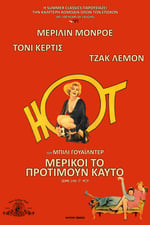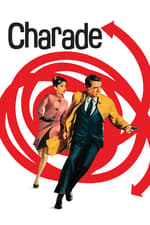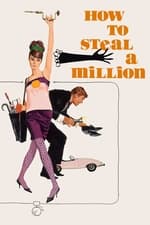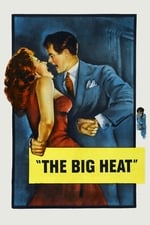Informations personnelles
Célèbre pour Image
Apparitions connues 127
Genre Homme
Date de naissance 27 mars 1902
Date de décès 3 avril 1998 (96 ans)
Lieu de naissance Bluff, Utah, USA
Alias
- Charles Bryant Lang
- The Professor
- Charles Lang, Jr.
- Charles B. Lang, Jr.
- Charles Bryant Lang, Jr.
Score de contenu
63
Nous sommes si proches, mais si loin...
Connectez-vous afin de
signaler un problème.
Biographie
From Wikipedia, the free encyclopedia
Charles Bryant Lang, Jr., A.S.C. (born March 27, 1902, Bluff, Utah – died April 3, 1998, Santa Monica, California) was an American cinematographer.
Early in his career, he worked with the Akeley camera, a gyroscope-mounted "pancake" camera designed by Carl Akeley for outdoor action shots. Lang's first credits were as co-cinematographer on the silent films The Night Patrol (1926) and The Loves of Ricardo (1927).
After completing Tom Sawyer for Paramount Pictures in 1930, he continued working at the studio for more than twenty years. The style of lighting he introduced in A Farewell to Arms became heavily identified with all of Paramount's films during the 1930s and 1940s, though he occasionally worked for other studios, for instance on The Ghost and Mrs. Muir (1947).
In 1951, he began the second phase of his career, this time as a free-lance cinematographer.[1] His credits include The Big Heat (1953) with Glenn Ford and Lee Marvin, Sabrina (1954) with Humphrey Bogart and William Holden, Gunfight at the O.K. Corral (1957) with Burt Lancaster and Kirk Douglas, The Matchmaker (1958), Some Like It Hot (1959) with Marilyn Monroe and Jack Lemmon, The Magnificent Seven (1960) with Steve McQueen, One-Eyed Jacks (1961) with Marlon Brando, How the West Was Won (1962) in Cinerama, Charade (1963) with Cary Grant and Audrey Hepburn, Bob & Carol & Ted & Alice (1969), and Butterflies Are Free (1972).
Lang received a Lifetime Achievement Award from the American Society of Cinematographers in 1991, for a career which included at least 114 feature films.
From Wikipedia, the free encyclopedia
Charles Bryant Lang, Jr., A.S.C. (born March 27, 1902, Bluff, Utah – died April 3, 1998, Santa Monica, California) was an American cinematographer.
Early in his career, he worked with the Akeley camera, a gyroscope-mounted "pancake" camera designed by Carl Akeley for outdoor action shots. Lang's first credits were as co-cinematographer on the silent films The Night Patrol (1926) and The Loves of Ricardo (1927).
After completing Tom Sawyer for Paramount Pictures in 1930, he continued working at the studio for more than twenty years. The style of lighting he introduced in A Farewell to Arms became heavily identified with all of Paramount's films during the 1930s and 1940s, though he occasionally worked for other studios, for instance on The Ghost and Mrs. Muir (1947).
In 1951, he began the second phase of his career, this time as a free-lance cinematographer.[1] His credits include The Big Heat (1953) with Glenn Ford and Lee Marvin, Sabrina (1954) with Humphrey Bogart and William Holden, Gunfight at the O.K. Corral (1957) with Burt Lancaster and Kirk Douglas, The Matchmaker (1958), Some Like It Hot (1959) with Marilyn Monroe and Jack Lemmon, The Magnificent Seven (1960) with Steve McQueen, One-Eyed Jacks (1961) with Marlon Brando, How the West Was Won (1962) in Cinerama, Charade (1963) with Cary Grant and Audrey Hepburn, Bob & Carol & Ted & Alice (1969), and Butterflies Are Free (1972).
Lang received a Lifetime Achievement Award from the American Society of Cinematographers in 1991, for a career which included at least 114 feature films.
Image
|
|||||||||||||||||||||||||||
|
|||||||||||||||||||||||||||
|
|||||||||||||||||||||||||||
|
|||||||||||||||||||||||||||
|
|||||||||||||||||||||||||||
|
|||||||||||||||||||||||||||
|
|||||||||||||||||||||||||||
|
|||||||||||||||||||||||||||
|
|||||||||||||||||||||||||||
|
|||||||||||||||||||||||||||
|
|||||||||||||||||||||||||||
|
|||||||||||||||||||||||||||
|
|||||||||||||||||||||||||||
|
|||||||||||||||||||||||||||
|
|||||||||||||||||||||||||||
|
|||||||||||||||||||||||||||
|
|||||||||||||||||||||||||||
|
|||||||||||||||||||||||||||
|
|||||||||||||||||||||||||||
|
|||||||||||||||||||||||||||
|
|||||||||||||||||||||||||||
|
|||||||||||||||||||||||||||
|
|||||||||||||||||||||||||||
|
|||||||||||||||||||||||||||
|
|||||||||||||||||||||||||||
|
|||||||||||||||||||||||||||
|
|||||||||||||||||||||||||||
|
|||||||||||||||||||||||||||
|
|||||||||||||||||||||||||||
|
|||||||||||||||||||||||||||
|
|||||||||||||||||||||||||||
|
|||||||||||||||||||||||||||
|
|||||||||||||||||||||||||||
|
|||||||||||||||||||||||||||
|
|||||||||||||||||||||||||||
|
|||||||||||||||||||||||||||
|
|||||||||||||||||||||||||||
|
|||||||||||||||||||||||||||
|
|||||||||||||||||||||||||||
|
|||||||||||||||||||||||||||
|
|||||||||||||||||||||||||||
|
|||||||||||||||||||||||||||
|
|||||||||||||||||||||||||||
|
|||||||||||||||||||||||||||
|
Interprétation
|
Équipe technique
|







